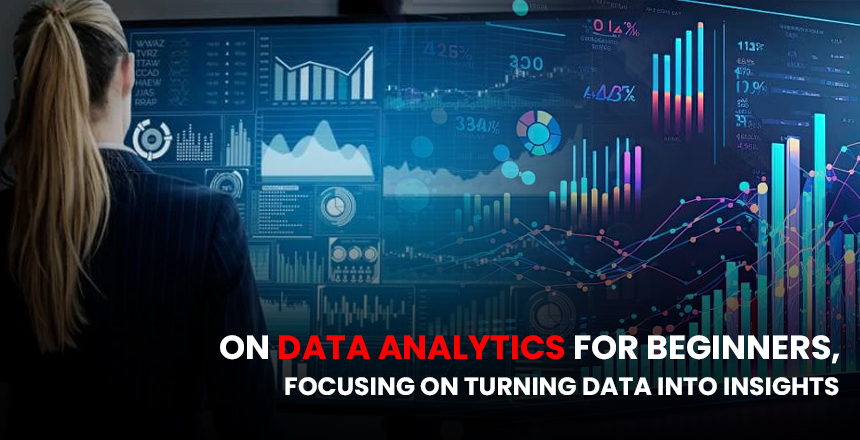It does not matter if you’re a student, an employee in a small business company, or a simple
data enthusiast; anyone would want to understand the fundamentals of data analytics. Putting
this together, data analytics could be perceived to mean the use of models, methods, and tools
to structure raw data to reveal patterns to derive conclusions and make decisions. Famously,
Alfred Marshall said that with a reasonable understanding of mathematics and statistics, with
analytical instruments, including Excel, data analytics can be started right away. In this guide for
new analysts, the main stages of the analysis of information will be described, and practical
recommendations will be given on how to transform data into effective information.
Getting to Know Your Data
The first important stage in virtually all data analysis is a step that involves becoming familiar
with what is meant by data. It consists of knowing how the data sources and characteristics,
structure type of the variable, number of records, quality data, and any peculiarities of the data.
For instance, are you working with survey data, sales transactions, web activity logs, or data
from sensors? To be precise, by doing the evaluation of your datasets initially, you will be well
poised in the later stages of the approaching plan. As the famous saying goes, ‘garbage in and
garbage out’. This means that the quality of the data affects the quality of the results always
produced, which must answer the research question.
Why and How to Define Your Analytical Approach
The following step is forming the strategy of analysis depending on aims and objectives,
properties of incoming data, and available tools. Ask yourself:
- What specific questions do I want the data to address to allow me to analyze them meaningfully?
- Can my data meet the requirements of containing the variables and the record necessary to respond to these questions quantitatively?
- Will the analysis aim at exploring how variables are related, wonder about patterns, look for themes, predict, or create hypotheses?
This is especially so given that there are time, budget, tool, and skill limitations when thinking of
the scope of the attack. When you know what it is that you want to accomplish, you are in a
position to stay on track.
Preparing the Data
Once you have laid down an analytical plan, then have your data for analysis. This data
preparation stage involves tasks like structuring, cleaning, transforming, and enriching the data.
If data is arranged correctly in tables or databases, then it is easier when analyzing is to be
done.
Cleaning therefore encompasses fixing mistakes, such as dealing with instances of
inconsistency, eliminating redundant data, and handling missing values.
Transformation activities may include activity such as putting variables together to formmeasures such as the sum or average, discretizing continuous variables, and normalization, among others.
Enriching means that one has to incorporate extra information to improve the analysis from
other sources.
Pro tip: This preprocessing phase consumes 80% of data analysis processes. Taking enough
time proves richness dividends at a later time.
Exploratory Analysis
Here you get some ideas about a kind of preliminary analysis to get a better sense of your
cleaned and prepared datasets. Exploratory data analysis is performed for the purpose of
looking for underlying structure, to assess certain hypotheses, to check the limitations of our
ability to analyze data, and most importantly, for interesting patterns to emerge. It includes
measures of central tendencies and variability; correlational and regression techniques; cross
tabulations; and data presentation methods that highlight trends. The data is free to develop
deeper penetration without an agenda in advance.
Advanced Modeling
For more developed datasets and the data-driven analyses that have been carried out as far as
possible, the next step is to build precise and accurate mathematical models for the purpose of
predictive analysis, forecasting, and analysis under ‘as if’ scenarios. The strategically important
category of advanced analytics involves such types as machine learning, neural networks,
decision trees, simulation modeling, optimization algorithms, text mining, and sentiment
analysis. With the help of tools like Python, R, SAS, Tableau, etc., one has the ability to perform
high-end analysis on large bundles of data. Thus, the latter is aimed at pointing out the most
suitable modeling strategy depending on the analytical goals.
Listen and understand.
The last and quite possibly the most crucial step of result analysis is deducing conclusions and
presenting them in a manner to facilitate the proscribing of actions. Key aspects include:
- Applying results of exploratory and advanced analysis into a proper contextual setting
- Develop connections to starting goals and clear outcome postulates.
- Dissecting and outlining what actionable steps need to be taken given and based on the data collected
- Often, coming up with data narratives that are specific to key audience groups
It is possible to learn how to change one’s mind to zoom in on the information that offers value
and new perspectives to people who will be able to apply it.
Conclusion
As briefed above, anyone who follows the laid-down processes will be poised to give meaning
to data for any starter. Begin with organizing accessible information to reply to a special
question with the aid of visualization and primary computation. The identification of other more
refined techniques is made as analytical excellence rises over time with mass practice. Since
the future is with the use of data in making decisions, then join the bandwagon of analytics today.








